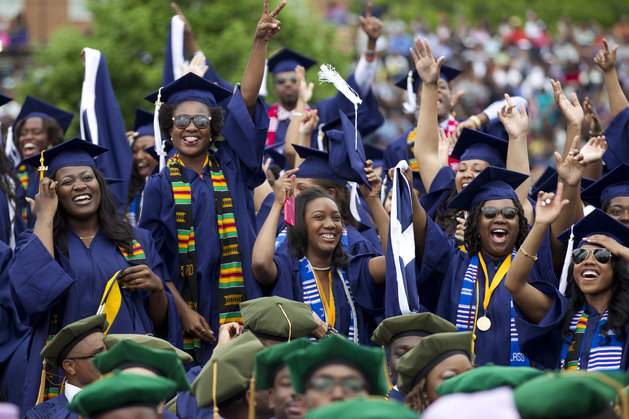Really? Mississippi published Blackface 40 years ago in its yearbook but today, it’s an HBCU?
The definition of a historically Black college or university (HBCU) includes being an institution of higher education that was originally founded to educate students of African American descent.
Beginning in 1837 Cheyney University (first HBCU) and followed shortly thereafter in 1854 by Lincoln University of Pennsylvania (first degree-granting HBCU, founded as The Ashmun Institute), black colleges became safe havens for black and brown people in a world where they were getting ridiculed, spat at, beaten, hung and killed everywhere else. These campuses were specifically designated for their advancement.
HBCUs have seen much growth since 1837. Though they initially lacked enormous budgets, endowments and resources, these institutions did NOT lack the resilience of African American people, so, they thrived. 100 years later, by 1937, these safe havens grew exponentially, to more than 100 schools and beautiful campuses providing strategic, intentional advancement for Black people.
The rich legacy and culture that accompany these institutions is one that is woven into the history books and embedded within the story of the African American human being in America. For almost 200 years, HBCU campuses, students, professors, presidents, and the communities that support them have been on the forefront of advocating for equality, fighting for justice and representing the excellence of Black people. Legislative changes, protests, marches, movements, church, funerals, meetings, and the advancement of the African American race has circumnavigated HBCUs.
Fast forward to 2019, the country still boasts upward of 100 HBCUs, with one university even located on the beautiful U.S. Virgin Islands.
Though they are not exclusive of other cultures…
These are Black spaces.
These are proud spaces.
How anyone could confuse the legacy, history and culture at an HBCU, with the legacy history and culture of a Predominantly White Institution (PWI) is very interesting. It is moreso a disrespectful miscalculation…there is NO MATH that can explain how confusing/calling a historically white institution, an HBCU, adds up.
Trashad Thomas, student at Mississippi State University for Agriculture and Applied Science (often called MSU), seems to think otherwise. He refers to his school as an HBCU.
Here are the facts. MSU is in Starkville, Mississippi with an enrollment of 17,000+ undergraduate students. Not only is MSU at PWI, Black people are significantly outnumbered at the school.

According to Data USA, more than 70% of those enrolled are White.
Thomas stands strong in his claims, that he attends an HBCU and even made shirts to represent how he feels:
SHIRTS ARE IN‼️ IF YOU WANNA SHOW YOUR LOVE FOR THE BEST HBCU THAT IS MISSISSIPPI SATE ,
— ✨ MADE IN HEAVEN ✨ (@TheNerdyHooper) October 22, 2019
DM ME 😊
FRONT. BACK
Shirts are long sleeve pic.twitter.com/t1zXwlOE2d
Is he selling these shirts? Are people buying them is an even better question. The tweet pinned to the top of Thomas’ twitter profile is paired with an interesting caption:
The best HBCU strikes again 🥴#Hailstate #ilovemyhbcu
— ✨ MADE IN HEAVEN ✨ (@TheNerdyHooper) August 22, 2019
pic.twitter.com/ySEdgqDKnK
His colleagues at Mississippi State University recognize that Thomas’ charade has been going on for nearly half a year. They join in the conversation saying things like:

Proud students at actual historically black colleges and university have recently joined the conversation:
It doesn’t seem to matter how much Thomas or fellow MSU colleagues are reminded of the facts, there responses are unchanged:

On top of the population of Black people being significantly outnumbered on MSU’s campus, 60 years ago THERE WASN’T A BLACK PERSON IN SIGHT ON THEIR CAMPUS. The very first Black student (who is still living) Richard Holmes, enrolled as a freshman on July 19, 1965. One grandma ago, this campus did not have a Black student studying on its entire campus! In a press release shared by the university, Holmes admitted he received “occasional heckling,” from his fellow MSU students!
54 years of “allowing” Black students to attend does not assert this school as a historically Black college or university. And, the numbers don’t lie.
Diving even deeper, news outlet, Mississippi Today wrote a story about racism universities in Mississippi, and none other than MSU was featured:
“A photo in Mississippi State’s 1986 yearbook shows a Sigma Phi Epsilon fraternity member posing with a darkened face and arm,” reads the same article.

Really? MSU allowed and PUBLISHED Blackface 33 years ago in its 1986 yearbook AND 40 years ago in its 1979 yearbook, but today, in 2019, it’s an HBCU?
Just 3 years ago in 2016, Black MSU students were protesting and petitioning to the university’s president to remove the Confederate flag. Hotty Toddy reports,
Mississippi State University is the remaining major public university in the state that still flies the state flag after the University of Mississippi and the University of Southern Mississippi both removed the flag from the campuses.

It is important to accurately represent the history (or lack thereof) of diversity and culture on one’s campus… But don’t listen to us. Hey, we were just educated on an HBCU campus by our ancestors for nearly 2 centuries. What do we know?








